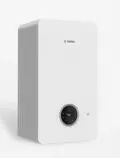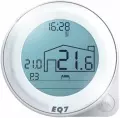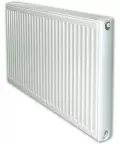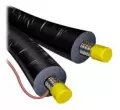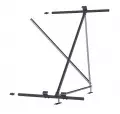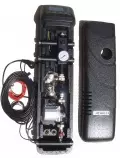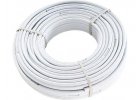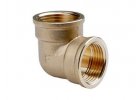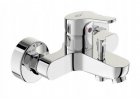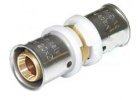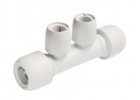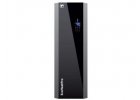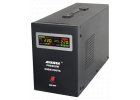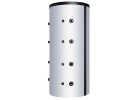Microphone

dynamic microphone
The diaphragm of the microphone moves depending on the sound pressure. This also causes the movement of the coil, which is connected to the membrane. An electrical signal is generated in the coil, which thus moves in the magnetic field. The output voltage changes depending on the movement of the diaphragm and the coil. In this microphone, the diaphragm moves the coil in the magnetic field of a permanent magnet, which creates alternating voltage or current (this is the opposite process to what happens in classic loudspeakers). Dynamic mics are less sensitive than condenser mics, so they handle loud vocals better in live performances, etc. They do not require power and are very resistant to mechanical damage. (An example of a living legend is the Shure SM58 microphone, which is very often used in public performances). The directional characteristic is cardiac.
Ribbon microphone

ribbon microphone
This microphone works on the same principle as a dynamic microphone. The difference is that the membrane is replaced by a thin aluminum strip that moves in the magnetic field depending on the acoustic pressure. Dynamic ribbon microphone (so-called Ribbon). Here the "membrane" is a corrugated strip of very thin aluminum foil (again a few microns), placed in a permanent magnet field. A transformer is used to convert from a very low impedance, which is a key component of these microphones, as is the strength of the magnets (mostly neodymium today) and the quality of the tension and curl of the aluminum foil. The construction is simple, but it is very sensitive to mechanical damage and cannot be stored near magnetically sensitive media, because they may become magnetized. Today, ribbon microphones are experiencing a "comeback", despite their very low sensitivity and frequency range up to about 15 kHz. Their big advantage is a pleasant "warm sound". Such microns must be stored in a vertical position for a long time. They are specific to the figure-of-eight characteristic.
Condenser microphone

condenser microphone
This type of microphone contains two thin metal plates that form a capacitor with each other. The power circuit creates an electric charge in the capacitor. One of these plates is fixed and the other is movable and has the function of an acoustic membrane. The mutual approach and distance of these plates causes a change in capacity and thus also a change in the output voltage. The thickness of the membrane is several microns and a layer of precious metal, most often gold, is deposited on it, using a method similar to how transistors are made. The change in capacitance is converted into an electrical signal either by means of a power supply from a soft source or a preamplifier with a very high input impedance (tubes that were used in the first microphones are very suitable for this. Today it is easier to solve such a microphone using an integrated circuit or transistors). Sometimes the microphone is part of an oscillator detuned by a change in capacitance, and in subsequent circuits the change is demodulated to a low-frequency signal. It is necessary that the distance between the membrane and the preamplifier is as small as possible. The diameter of the diaphragm is usually one inch (or 2.54 cm). Condenser microphones require power. With a suitable construction of the microphone insert, it is possible to change the directional characteristic of the microphone with the polarization voltage, which is used in studio microphones. Condenser microphones are mainly used for professional studio recording and measurement purposes. Nowadays, dynamic microphones are mainly used for live performances. Condenser microphones are among the most acoustically reliable and sensitive of the various microphone principles.
Electret microphone
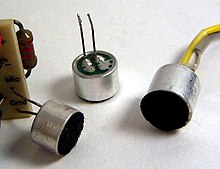
electret microphones
An electret microphone is a type of condenser microphone in which the electric field required for function is created by an electret, i.e. a non-conducting mass that is permanently charged. In the rhythm of the movement of the membrane, the capacity of the capacitor changes and thus the voltage between the plates. Voltage changes must be processed by a preamplifier with a high input impedance (usually a built-in FET transistor, directly in the body of the microphone), thus they also need a power supply. They are produced for demanding measuring purposes, for studios, but also for simple use, for example in computers, telephones, consumer electronics, etc. The microphone body itself is usually no larger than 1 cm in diameter.
Carbon microphone

carbon microphone
This type is neither a dynamic nor a condenser microphone. The microphone was used in old telephone sets, and thanks to its shock resistance, also in army walkie-talkies and telephones. The principle is based on the compression of carbon granules. If these are compressed, their resistance decreases and the output voltage increases. The first acoustic amplifiers for telephone switchboards were also constructed on the principle of a carbon microphone. Such amplifiers had high distortion and small frequency range. In the microphones of this construction, there is a rattling sound caused by the friction of the carbon grains against each other during mechanical (even very gentle) blows. In the early days of radio broadcasting, the high-power transmitter signal passed through a carbon microphone, so the microphones required cooling. They were placed in heavy tripods and spring systems, which eliminated mechanical shocks. They have no directional characteristics.
Piezoelectric (piezo) microphone

piezo microphone
The microphone is based on the piezoelectric phenomenon. The crystal substance generates a polarized electric voltage during its deformation. A piezoelectric microphone is based on this principle, which is mainly used for recording the sound of acoustic instruments (double bass, guitar, violin), because the flat sensing element can be advantageously attached to the soundboard of the musical instrument. The vibrations of the plate were transmitted to the sensing crystal, which generated a voltage equivalent to the vibrations. The piezoelectric microphone was mainly used in the second half of the 20th century. The low cost of its production predestined it as a supplement to tape recorders.
Characteristics of the microphone
the frequency range for which the microphones are designed. It is given in Hz. A range of 40 Hz - 15 kHz is required for quality recording. Carbon microphone: 300 Hz - 3 kHz, Dynamic microphone: 20 Hz - 20 kHz, Condenser microphone: 10 Hz - 20 kHz.
directional characteristic, the dependence of the microphone's sensitivity on the angle between the axis of the microphone and the direction from which the sound source acts. It is expressed by a spatial graph.
frequency characteristic is the dependence of the microphone's sensitivity on frequency. It is expressed graphically.
the sensitivity of the microphone is the minimum sound pressure that the microphone is able to pick up to produce the desired response. It is given in mV/Pa for a given frequency. The lower the sensitivity, the closer the microphone must be to the sound source. Sensitivity is not a critical factor as long as it does not drop below 0.8 mV/Pa at an internal microphone resistance of 200 Ohm. Then the signal-to-noise ratio of 45 dB is still maintained, which is the limit of recognition.
microphone noise If the equivalent microphone noise level is lower than the studio noise level (acoustic pressure 3.6.10-2 Pa) then the microphone is suitable.
output impedance. Depending on the species, it is more or less dependent on the frequency. The magnitude of the impedance is important for connecting the microphone to the amplifier (impedance matching).
directivity factor Each type of microphone is characterized by the fact that its output voltage also depends on the direction from which the sound wave hits the microphone. Only microphones with omnidirectional directional characteristics have omnidirectional sensitivity, but even for them this only applies to medium and low frequencies. At higher frequencies, it changes to a heart-shaped to a figure-of-eight in the case that the wavelength approaches the size of the microphone. Microphones with heart or the figure-of-eight characteristic emphasizes sound waves coming from the direction of the microphone's greatest sensitivity and suppresses sound from other directions. The directivity factor can be expressed mathematically as the ratio of the square of the output voltage to the square of the output voltage of the same microphone placed in a perfectly diffused acoustic field, assuming the same acoustic pressure and wave incident on the axis of the microphone. A microphone with a perfectly omnidirectional characteristic has a directivity coefficient = 1. The square root of the directivity factor is the so-called distance factor, which indicates how many times it is possible to move a directional microphone away from an acoustic source compared to a microphone with omnidirectional characteristics while maintaining the same ratio of direct and interfering signal.
Directional characteristic
The directional characteristic is the spatial sensitivity of the microphone. Depending on the design and type of microphone, it can receive sound from different directions at different intensities. Microphones are designed with directional characteristics according to their intended use. The directional characteristic is frequency-dependent – it usually manifests itself at high tones, while deep ones remain unnoticeable.
-
omnidirectional -
subcardiac -
cardiac -
supercardioid -
hypercardioid -
figure eight -
directional
Frequency characteristics of microphones
Up Oktava 319 (studio), down Shure SM58 (vocal)
The frequency characteristic of the microphone is the dependence of the sensitivity on the frequency. It is expressed graphically. The physical ideal would be a microphone that would always convert an acoustic stimulus into an equivalent electrical signal, regardless of its frequency. However, this is not the case. Achieving a balanced characteristic at least in the audible range requires expensive measures, for example very small dimensions of the microphone. Over time, however, the deficiency became a virtue, and the frequency imbalances of individual products began to be used to help highlight or suppress some of the characteristic sound tones of the objects being scanned. For example all microphones, except for omnidirectional ones, work as pressure gradient transducers, as they approach the signal source they amplify deep frequencies - the so-called 'proximity effect'. This is used by some singers to achieve a warm sound color in certain passages of singing by moving the microphone closer and further away.
For special purposes, microphones are produced with a suppressed part of the frequency characteristic (e.g. for reportage speech recording or for communication devices working in noisy environments), in some cases they are also equipped with switchable corrections directly in the microphone body itself, or they are supposed to emphasize a certain part of the spectrum necessary for recording the sound of specific musical instruments.
Accessories
protection against wind and mechanical influences - usually in the form of a sound-permeable cover (foam, fabric)
spider - mainly used for condenser microphones. The body of the microphone is caught in a rubber (or spring) suspension system that separates it from mechanical shocks.
windshield- commonly used name for foam protection of the microphone against the wind. It is mainly used by TV crews on reporting microphones, and its "hairy" counterpart is also used on narrow directional microphones.
pop filter - used in studios. It is a screen made of breathable fabric that dampens (disperses) a larger volume of air (e.g. exhalation) so that it is not transmitted as a shock wave to the microphone.









































